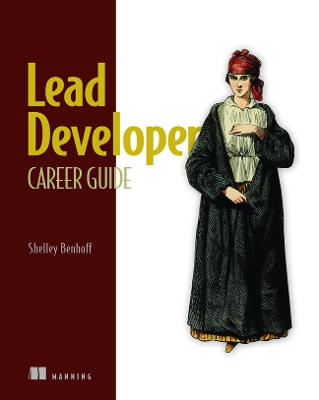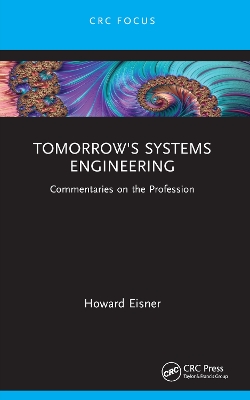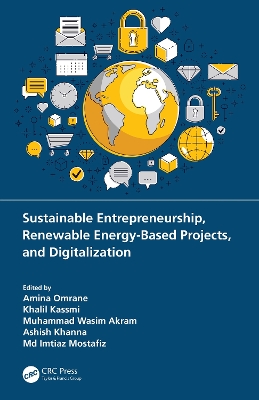Creating Agile Organizations
 portes grátis
portes grátis
Creating Agile Organizations
A Systemic Approach
Ramos, Cesario; Pavlichenko, Ilia
Pearson Education (US)
10/2022
480
Mole
Inglês
9780135853191
15 a 20 dias
820
Descrição não disponível.
Foreword by Craig Larman xix
Foreword by Dave West xxi
Preface xxiii
Introduction xxvii
Acknowledgments xxxv
About the Authors xxxvii
Part I: Foundational Concepts 1
Chapter 1: Organizing for Adaptability 3 Hello, VUCA World! 3
What Is an Agile Organization Design? 4
Typical Problems When Adopting Agility 6
Avoid Copy-Paste Scaling: A Typical Scaling Approach 10
Overview of an Agile Organization Design 11
Summary 16
References 17
Chapter 2: Systems Thinking 19 Basics of Systems Thinking 19
Applying Systems Thinking 31
Summary 48
References 49
Chapter 3: Optimize for Adaptiveness 51 What It Means to Be Adaptable 53
Flow Efficiency 54
Behavior of Queues 54
Queueing System Structures 61
Algorithm for Dealing with Queues 62
Choose an Operational Strategy 63
Summary 67
References 68
Chapter 4: Agile Organizational Design 69 Why Organizational Redesign? 70
Business Strategy Drives Organizational Design 71
Overview of a Design Process 72
Agile Organization Design Guidelines 73
Agile vs. Traditional Human Resources Management 101
Summary 104
References 105
Chapter 5: An Agile Adoption Approach 107 Principles of an Agile Adoption 107
Overview of an Adoption Approach 109
Overarching Adoption Guidelines 111
Applying Systems Thinking in Organizational Coaching 120
Summary 130
References 131
Chapter 6: Coaching for Change 133 Guideline 1: Influence People 134
Guideline 2: Co-Create the Change 136
Guideline 3: Voluntary Participation 139
Guideline 4: Acknowledge the Loss 144
Guideline 5: Deliver the Message Continually 147
Guideline 6: Help People to Cross the Edge 149
Guideline 7: Axes of Change 153
Guideline 8: Find the Right Balance of Radical/Incremental Change 159
Summary 161
References 162
Part II: Applying the Concepts 165
Chapter 7: Group Facilitation 167 Principles of Facilitation 167
Workshop Design 172
Facilitating Scrum Events 178
Summary 195
References 196
Chapter 8: Preparing the Product Group 197 Areas of Concern for Successful Preparation 197
Area 1: Involve the Managers 198
Area 2: Understand the Current Reality 204
Area 3: Create a Vision of the Future 221
Area 4: Identify the Product Group 233
Organizational Design to Eliminate Dependencies 242
Summary 249
References 250
Chapter 9: Launching the Product Group 251 Menu of Available Choices 252
Initial Product Backlog Refinement 253
Define the Definition of Done 257
Feature Team Adoption Map 260
Self-Designing Team Workshop 265
Team Lift-Off 270
Identify and Launch Communities 282
Identify Coordination Mechanisms 284
Create Useful Checklists 286
Summary 288
References 289
Chapter 10: Coaching Teams 291 The Building Blocks of the Agile Organization 291
Observations of an Agile Team 292
Building on the Team Lift-Off: Coaching Multifunctional Learning 296
Dealing with Recurrent Complex Problems in Teams: Systems Team Coaching 315
Improving Team Dynamics: Trust 329
Facilitate Feedback Loops for Learning: Learning New Practices 332
Summary 335
References 335
Chapter 11: Guiding the Product Ownership 337 What Makes a Team Product Owner? 337
The Product Owner in a Senior Position 341
Product Ownership Measures 345
Customer Understanding 347
The Product Owner Process 349
Stakeholder Alignment 351
Product Owner Leadership 354
Summary 356
References 357
Appendix Case Studies and Workshop Examples 359
Index 413
Foreword by Dave West xxi
Preface xxiii
Introduction xxvii
Acknowledgments xxxv
About the Authors xxxvii
Part I: Foundational Concepts 1
Chapter 1: Organizing for Adaptability 3 Hello, VUCA World! 3
What Is an Agile Organization Design? 4
Typical Problems When Adopting Agility 6
Avoid Copy-Paste Scaling: A Typical Scaling Approach 10
Overview of an Agile Organization Design 11
Summary 16
References 17
Chapter 2: Systems Thinking 19 Basics of Systems Thinking 19
Applying Systems Thinking 31
Summary 48
References 49
Chapter 3: Optimize for Adaptiveness 51 What It Means to Be Adaptable 53
Flow Efficiency 54
Behavior of Queues 54
Queueing System Structures 61
Algorithm for Dealing with Queues 62
Choose an Operational Strategy 63
Summary 67
References 68
Chapter 4: Agile Organizational Design 69 Why Organizational Redesign? 70
Business Strategy Drives Organizational Design 71
Overview of a Design Process 72
Agile Organization Design Guidelines 73
Agile vs. Traditional Human Resources Management 101
Summary 104
References 105
Chapter 5: An Agile Adoption Approach 107 Principles of an Agile Adoption 107
Overview of an Adoption Approach 109
Overarching Adoption Guidelines 111
Applying Systems Thinking in Organizational Coaching 120
Summary 130
References 131
Chapter 6: Coaching for Change 133 Guideline 1: Influence People 134
Guideline 2: Co-Create the Change 136
Guideline 3: Voluntary Participation 139
Guideline 4: Acknowledge the Loss 144
Guideline 5: Deliver the Message Continually 147
Guideline 6: Help People to Cross the Edge 149
Guideline 7: Axes of Change 153
Guideline 8: Find the Right Balance of Radical/Incremental Change 159
Summary 161
References 162
Part II: Applying the Concepts 165
Chapter 7: Group Facilitation 167 Principles of Facilitation 167
Workshop Design 172
Facilitating Scrum Events 178
Summary 195
References 196
Chapter 8: Preparing the Product Group 197 Areas of Concern for Successful Preparation 197
Area 1: Involve the Managers 198
Area 2: Understand the Current Reality 204
Area 3: Create a Vision of the Future 221
Area 4: Identify the Product Group 233
Organizational Design to Eliminate Dependencies 242
Summary 249
References 250
Chapter 9: Launching the Product Group 251 Menu of Available Choices 252
Initial Product Backlog Refinement 253
Define the Definition of Done 257
Feature Team Adoption Map 260
Self-Designing Team Workshop 265
Team Lift-Off 270
Identify and Launch Communities 282
Identify Coordination Mechanisms 284
Create Useful Checklists 286
Summary 288
References 289
Chapter 10: Coaching Teams 291 The Building Blocks of the Agile Organization 291
Observations of an Agile Team 292
Building on the Team Lift-Off: Coaching Multifunctional Learning 296
Dealing with Recurrent Complex Problems in Teams: Systems Team Coaching 315
Improving Team Dynamics: Trust 329
Facilitate Feedback Loops for Learning: Learning New Practices 332
Summary 335
References 335
Chapter 11: Guiding the Product Ownership 337 What Makes a Team Product Owner? 337
The Product Owner in a Senior Position 341
Product Ownership Measures 345
Customer Understanding 347
The Product Owner Process 349
Stakeholder Alignment 351
Product Owner Leadership 354
Summary 356
References 357
Appendix Case Studies and Workshop Examples 359
Index 413
Este título pertence ao(s) assunto(s) indicados(s). Para ver outros títulos clique no assunto desejado.
agile coaching; scrum master; large-scale scrum; large-scale agile; scale agile; enterprise agile; enterprise scrum; agile organization design; agile consulting; agile change management
Foreword by Craig Larman xix
Foreword by Dave West xxi
Preface xxiii
Introduction xxvii
Acknowledgments xxxv
About the Authors xxxvii
Part I: Foundational Concepts 1
Chapter 1: Organizing for Adaptability 3 Hello, VUCA World! 3
What Is an Agile Organization Design? 4
Typical Problems When Adopting Agility 6
Avoid Copy-Paste Scaling: A Typical Scaling Approach 10
Overview of an Agile Organization Design 11
Summary 16
References 17
Chapter 2: Systems Thinking 19 Basics of Systems Thinking 19
Applying Systems Thinking 31
Summary 48
References 49
Chapter 3: Optimize for Adaptiveness 51 What It Means to Be Adaptable 53
Flow Efficiency 54
Behavior of Queues 54
Queueing System Structures 61
Algorithm for Dealing with Queues 62
Choose an Operational Strategy 63
Summary 67
References 68
Chapter 4: Agile Organizational Design 69 Why Organizational Redesign? 70
Business Strategy Drives Organizational Design 71
Overview of a Design Process 72
Agile Organization Design Guidelines 73
Agile vs. Traditional Human Resources Management 101
Summary 104
References 105
Chapter 5: An Agile Adoption Approach 107 Principles of an Agile Adoption 107
Overview of an Adoption Approach 109
Overarching Adoption Guidelines 111
Applying Systems Thinking in Organizational Coaching 120
Summary 130
References 131
Chapter 6: Coaching for Change 133 Guideline 1: Influence People 134
Guideline 2: Co-Create the Change 136
Guideline 3: Voluntary Participation 139
Guideline 4: Acknowledge the Loss 144
Guideline 5: Deliver the Message Continually 147
Guideline 6: Help People to Cross the Edge 149
Guideline 7: Axes of Change 153
Guideline 8: Find the Right Balance of Radical/Incremental Change 159
Summary 161
References 162
Part II: Applying the Concepts 165
Chapter 7: Group Facilitation 167 Principles of Facilitation 167
Workshop Design 172
Facilitating Scrum Events 178
Summary 195
References 196
Chapter 8: Preparing the Product Group 197 Areas of Concern for Successful Preparation 197
Area 1: Involve the Managers 198
Area 2: Understand the Current Reality 204
Area 3: Create a Vision of the Future 221
Area 4: Identify the Product Group 233
Organizational Design to Eliminate Dependencies 242
Summary 249
References 250
Chapter 9: Launching the Product Group 251 Menu of Available Choices 252
Initial Product Backlog Refinement 253
Define the Definition of Done 257
Feature Team Adoption Map 260
Self-Designing Team Workshop 265
Team Lift-Off 270
Identify and Launch Communities 282
Identify Coordination Mechanisms 284
Create Useful Checklists 286
Summary 288
References 289
Chapter 10: Coaching Teams 291 The Building Blocks of the Agile Organization 291
Observations of an Agile Team 292
Building on the Team Lift-Off: Coaching Multifunctional Learning 296
Dealing with Recurrent Complex Problems in Teams: Systems Team Coaching 315
Improving Team Dynamics: Trust 329
Facilitate Feedback Loops for Learning: Learning New Practices 332
Summary 335
References 335
Chapter 11: Guiding the Product Ownership 337 What Makes a Team Product Owner? 337
The Product Owner in a Senior Position 341
Product Ownership Measures 345
Customer Understanding 347
The Product Owner Process 349
Stakeholder Alignment 351
Product Owner Leadership 354
Summary 356
References 357
Appendix Case Studies and Workshop Examples 359
Index 413
Foreword by Dave West xxi
Preface xxiii
Introduction xxvii
Acknowledgments xxxv
About the Authors xxxvii
Part I: Foundational Concepts 1
Chapter 1: Organizing for Adaptability 3 Hello, VUCA World! 3
What Is an Agile Organization Design? 4
Typical Problems When Adopting Agility 6
Avoid Copy-Paste Scaling: A Typical Scaling Approach 10
Overview of an Agile Organization Design 11
Summary 16
References 17
Chapter 2: Systems Thinking 19 Basics of Systems Thinking 19
Applying Systems Thinking 31
Summary 48
References 49
Chapter 3: Optimize for Adaptiveness 51 What It Means to Be Adaptable 53
Flow Efficiency 54
Behavior of Queues 54
Queueing System Structures 61
Algorithm for Dealing with Queues 62
Choose an Operational Strategy 63
Summary 67
References 68
Chapter 4: Agile Organizational Design 69 Why Organizational Redesign? 70
Business Strategy Drives Organizational Design 71
Overview of a Design Process 72
Agile Organization Design Guidelines 73
Agile vs. Traditional Human Resources Management 101
Summary 104
References 105
Chapter 5: An Agile Adoption Approach 107 Principles of an Agile Adoption 107
Overview of an Adoption Approach 109
Overarching Adoption Guidelines 111
Applying Systems Thinking in Organizational Coaching 120
Summary 130
References 131
Chapter 6: Coaching for Change 133 Guideline 1: Influence People 134
Guideline 2: Co-Create the Change 136
Guideline 3: Voluntary Participation 139
Guideline 4: Acknowledge the Loss 144
Guideline 5: Deliver the Message Continually 147
Guideline 6: Help People to Cross the Edge 149
Guideline 7: Axes of Change 153
Guideline 8: Find the Right Balance of Radical/Incremental Change 159
Summary 161
References 162
Part II: Applying the Concepts 165
Chapter 7: Group Facilitation 167 Principles of Facilitation 167
Workshop Design 172
Facilitating Scrum Events 178
Summary 195
References 196
Chapter 8: Preparing the Product Group 197 Areas of Concern for Successful Preparation 197
Area 1: Involve the Managers 198
Area 2: Understand the Current Reality 204
Area 3: Create a Vision of the Future 221
Area 4: Identify the Product Group 233
Organizational Design to Eliminate Dependencies 242
Summary 249
References 250
Chapter 9: Launching the Product Group 251 Menu of Available Choices 252
Initial Product Backlog Refinement 253
Define the Definition of Done 257
Feature Team Adoption Map 260
Self-Designing Team Workshop 265
Team Lift-Off 270
Identify and Launch Communities 282
Identify Coordination Mechanisms 284
Create Useful Checklists 286
Summary 288
References 289
Chapter 10: Coaching Teams 291 The Building Blocks of the Agile Organization 291
Observations of an Agile Team 292
Building on the Team Lift-Off: Coaching Multifunctional Learning 296
Dealing with Recurrent Complex Problems in Teams: Systems Team Coaching 315
Improving Team Dynamics: Trust 329
Facilitate Feedback Loops for Learning: Learning New Practices 332
Summary 335
References 335
Chapter 11: Guiding the Product Ownership 337 What Makes a Team Product Owner? 337
The Product Owner in a Senior Position 341
Product Ownership Measures 345
Customer Understanding 347
The Product Owner Process 349
Stakeholder Alignment 351
Product Owner Leadership 354
Summary 356
References 357
Appendix Case Studies and Workshop Examples 359
Index 413
Este título pertence ao(s) assunto(s) indicados(s). Para ver outros títulos clique no assunto desejado.







